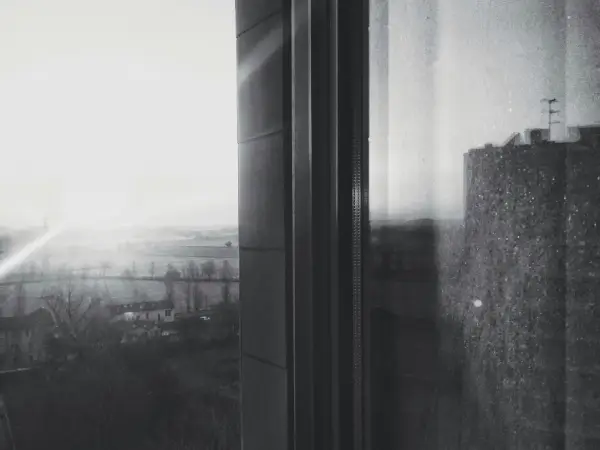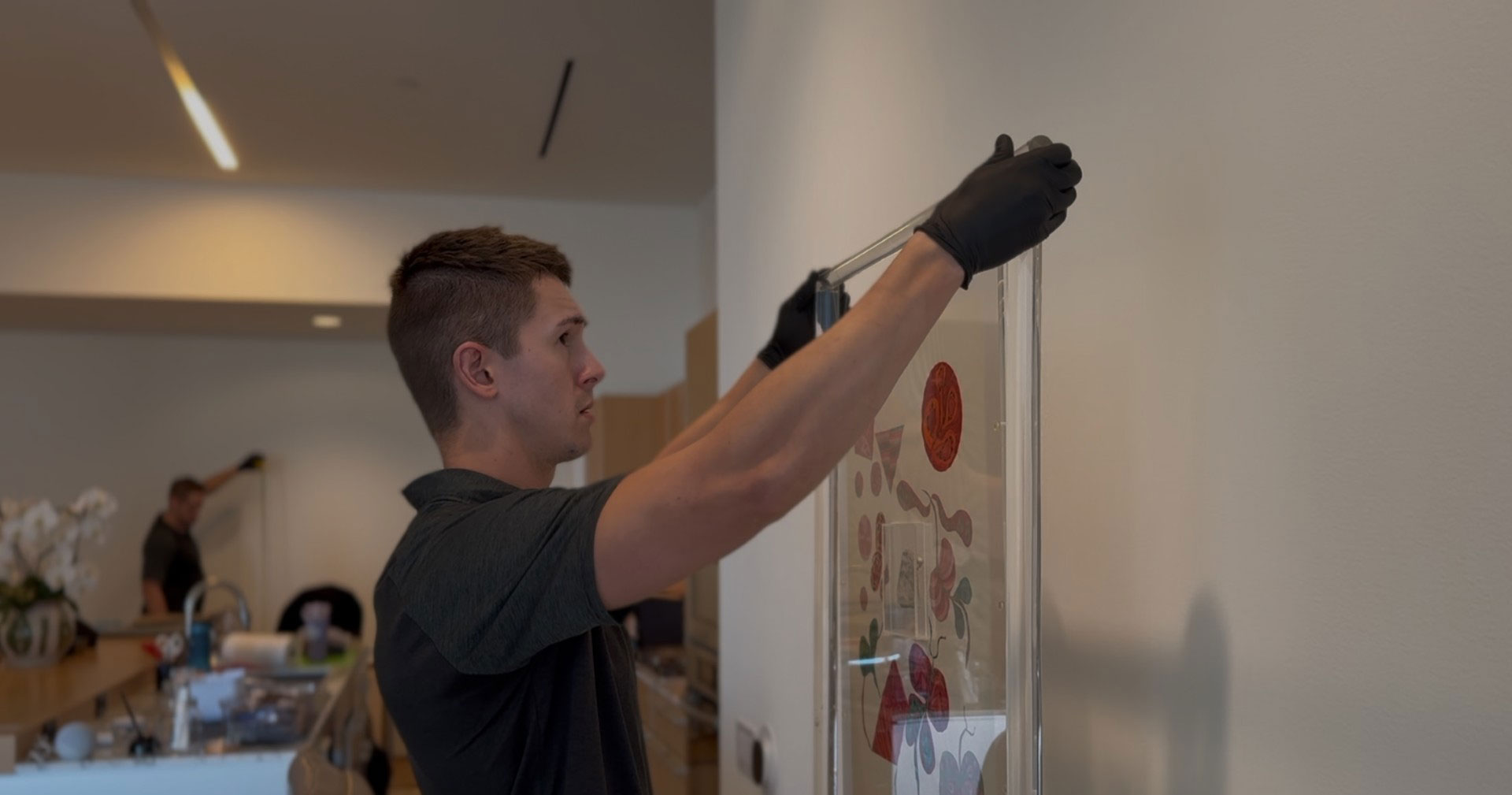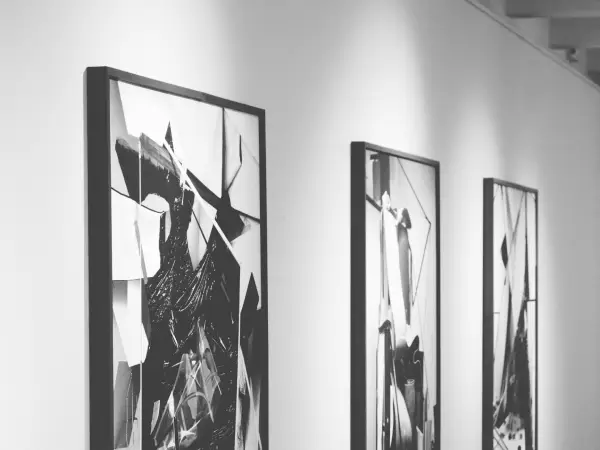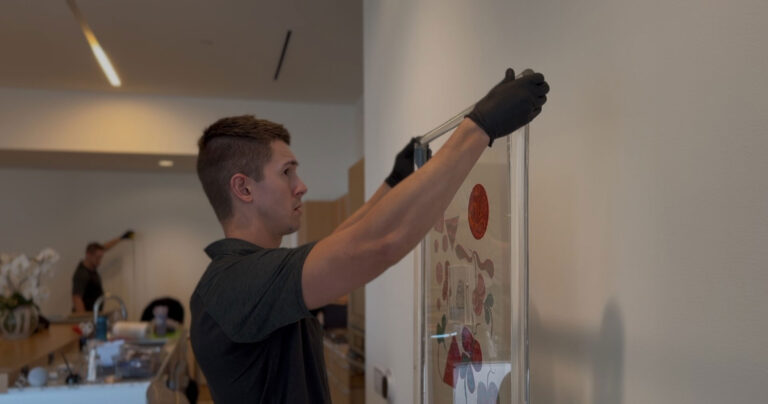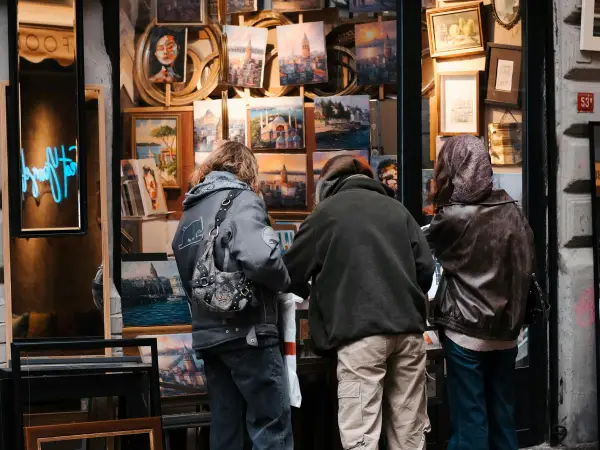Back when our gallery had a frame shop, the only option to reduce reflection on artworks that needed glazing was to ask for Non-Glare glass. Although this was a poor solution, it was the only solution at the time. Non-Glare glass had one side sandblasted so any reflected light would be dispersed, making the reflection look like a blob of light on the surface of the glass rather than returning a harsh reflection. We refused to use this glass because to actually see the artwork properly. You had to place the glass directly on the artwork, otherwise it would appear like you were looking at it through fog, and it is never a good idea to have glass sitting directly on an artwork in a frame assembly. (1.) So to understand what products are available today and how they work, and sometimes don’t, following are some reflections on the problem of reflections as they relate to glazed artworks.
Today, the best way to handle the problem of reflection is to use a glazing material onto which an AR (anti-reflective) coating has been applied. This is a similar coating that is now used on eye glass lenses that allows you to actually see a person’s eyes and it all but eliminates glare from oncoming car headlights at night.
The AR coating is designed to disrupt the energy contained in light waves causing them to flow out of sync. Under most conditions, AR glass helps reduce reflections to the point that they are not much of a problem, but it does not eliminate all reflection issues. From my personal experience, the coating’s effectiveness is related to how well lit the artwork is and the direction of the light source.

Diagram of rooms described below. Primary reflection problem was solved by changing glazing material to AR coated glass, turning on the living room lights, and the lamp beside the artwork.
This became evident to me when a client said she had a problem with reflection on an artwork in her living room. I suggested using AR coated glass thinking that that would most likely solve her reflection problem. I had the glass switched out and she called to let me know that the glass was still acting like a mirror. When I arrived to see what the problem might be, I discovered that, to my surprise, the artwork’s AR coated glass presented the exact same problem with reflection that the uncoated glass did. I noticed the room where the artwork was hanging and the dining room, across from the artwork, were both kept dark. At the opposite end of the dining room was a large picture window that was allowing a lot of light into the dining room. There was a door between the kitchen and the dining room she frequently used and as she walked through the two dark rooms, all she saw when she looked at the artwork was the reflection of the picture window at the far end of the dining room. I suggested that we turn on a lamp next to the artwork and discovered that the reflection issue was greatly reduced.
The takeaway of this story is that if an artwork has AR glazing and is well lit compared to its surrounding area, most reflection sources will be minimized and may not be noticed at all, especially if a viewer is focused on the artwork itself and not on the reflection source. In fact, I have often looked at artworks that have AR glazing and wondered why they weren’t glazed, only to discover on close examination that they were. If an artwork is underlit compared to its surrounding area and there is a lot of reflection, don’t be disappointed, it is just how the AR coating works. The solution is to either put more light on the artwork or reduce the amount of light in the surrounding area compared to what is already on the artwork.
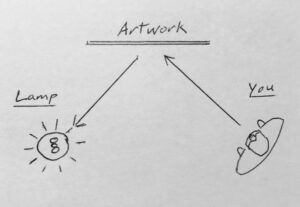 Light source and highly reflective areas will be visible in the glazing if the artwork itself is not properly lighted.
Light source and highly reflective areas will be visible in the glazing if the artwork itself is not properly lighted.
Overhead lighting also helps to reduce reflections compared to lighting with lamps that are at the same height as the viewer. If you are standing beside an AR glazed artwork and there is a lamp on the opposite side of the artwork at the same angle and distance away from the artwork you are, you will see the lamp reflected in its glazing. With overhead lighting, the viewer would have to be looking up from the floor to see the reflection of the light above. AR glazing does have its limitations, but considering its old alternative, Non-Glare, it is a panacea.
R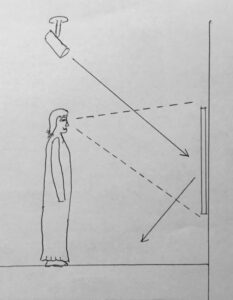 eflection is all about the light sources surrounding a glazed artwork and their relation to the viewer. The best lighting method for glazed works on paper is from above unless an artwork is hung high on a wall.
eflection is all about the light sources surrounding a glazed artwork and their relation to the viewer. The best lighting method for glazed works on paper is from above unless an artwork is hung high on a wall.
As I mentioned in our last blogpost, When to use UV control glazing, the folks at Tru Vue have a good helpdesk and their technical department can answer most any glazing related framing or installation question. Their help desk number is 708-854-2700 and their email is fineart@tru-vue.co.
- I know of no circumstance where it is good for a glazing material to be in contact with an artwork on paper. If there is no other framing choice than to have the glazing material in
contact with the artwork, it is better to use Plexiglas rather than glass. Quick changes in temperature and humidity can cause glass to fog over, even on the inside of a frame assembly. If this happens with a work on paper, especially if the glass is in contact with the artwork, the paper can absorb the moisture creating a perfect environment for mold to grow, the paper to be stained, pigments to react adversely, or wrinkling; none of which are going to be good for the artwork.


